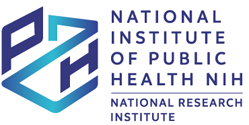Pesticide exposure and blood cholinesterase levels among adolescents from farming families in Northern Thailand
1
Faculty of Public Health, Chiang Mai University, Thailand
2
Department of Research and Medical Innovation, Faculty of Medicine Vajira Hospital, Navamindradhiraj University, Thailand
Data nadesłania: 26-05-2024
Data ostatniej rewizji: 24-06-2024
Data akceptacji: 25-06-2024
Data publikacji online: 01-07-2024
Data publikacji: 14-08-2024
Autor do korespondencji
Parichat Ong-Artborirak
Department of Research and Medical Innovation, Faculty of Medicine Vajira Hospital, Navamindradhiraj University, 3 Thanon Khao, 13000, Bangkok, Thailand
Department of Research and Medical Innovation, Faculty of Medicine Vajira Hospital, Navamindradhiraj University, 3 Thanon Khao, 13000, Bangkok, Thailand
Rocz Panstw Zakl Hig 2024;75(2):175-183
SŁOWA KLUCZOWE
DZIEDZINY
STRESZCZENIE
Background: Adolescents living in agricultural communities may be at risk for the adverse effects of pesticide exposure
because they are involved in agriculture either as a career or to support their families. Objective: The purpose of this study was to investigate the association of farm activities related to pesticide exposure on
blood cholinesterase (ChE) levels among adolescents from farming families in the north of Thailand. Material and Methods: This cross-sectional study included 336 adolescents aged 12-19 years from farming families in
Chiang Dao District, Chiang Mai Province. Data on pesticide exposure was collected using a questionnaire, and blood
ChE activity was assessed using a ChE reactive paper test kit via fingerstick blood sampling. Results: Overall, 51.2% of participants had abnormal blood ChE levels. Univariable logistic regression analysis revealed
that pesticide-related activities on farms associated with abnormal ChE levels were mixing/spraying (OR=10.54;
95%CI=4.63-23.99), assisting or working in areas with pesticide application (OR=5.54; 95%CI=3.45-8.89), and harvesting
(OR=3.70; 95%CI=2.35-5.82). In a multivariable model (Nagelkerke R2=0.374), mixing/spraying (OR=4.90; 95%CI=2.03-11.83) and assisting or working in areas with pesticide application (OR=2.61; 95%CI=1.49-4.57) were significantly
associated with abnormal ChE levels, but harvesting (OR=1.48; 95%CI=0.84-2.61) was not significant after adjusting for
sex, age in years, and entering or walking through a farm. Conclusions: The findings indicated that Thai adolescents living in farming families are at risk of pesticide exposure,
particularly those involved in agricultural activities such as pesticide applicators. An intervention and measure to raise
awareness and reduce the risk of pesticide exposure in adolescents is required.
Udostępnij
ARTYKUŁ POWIĄZANY
Przetwarzamy dane osobowe zbierane podczas odwiedzania serwisu. Realizacja funkcji pozyskiwania informacji o użytkownikach i ich zachowaniu odbywa się poprzez dobrowolnie wprowadzone w formularzach informacje oraz zapisywanie w urządzeniach końcowych plików cookies (tzw. ciasteczka). Dane, w tym pliki cookies, wykorzystywane są w celu realizacji usług, zapewnienia wygodnego korzystania ze strony oraz w celu monitorowania ruchu zgodnie z Polityką prywatności. Dane są także zbierane i przetwarzane przez narzędzie Google Analytics (więcej).
Możesz zmienić ustawienia cookies w swojej przeglądarce. Ograniczenie stosowania plików cookies w konfiguracji przeglądarki może wpłynąć na niektóre funkcjonalności dostępne na stronie.
Możesz zmienić ustawienia cookies w swojej przeglądarce. Ograniczenie stosowania plików cookies w konfiguracji przeglądarki może wpłynąć na niektóre funkcjonalności dostępne na stronie.



